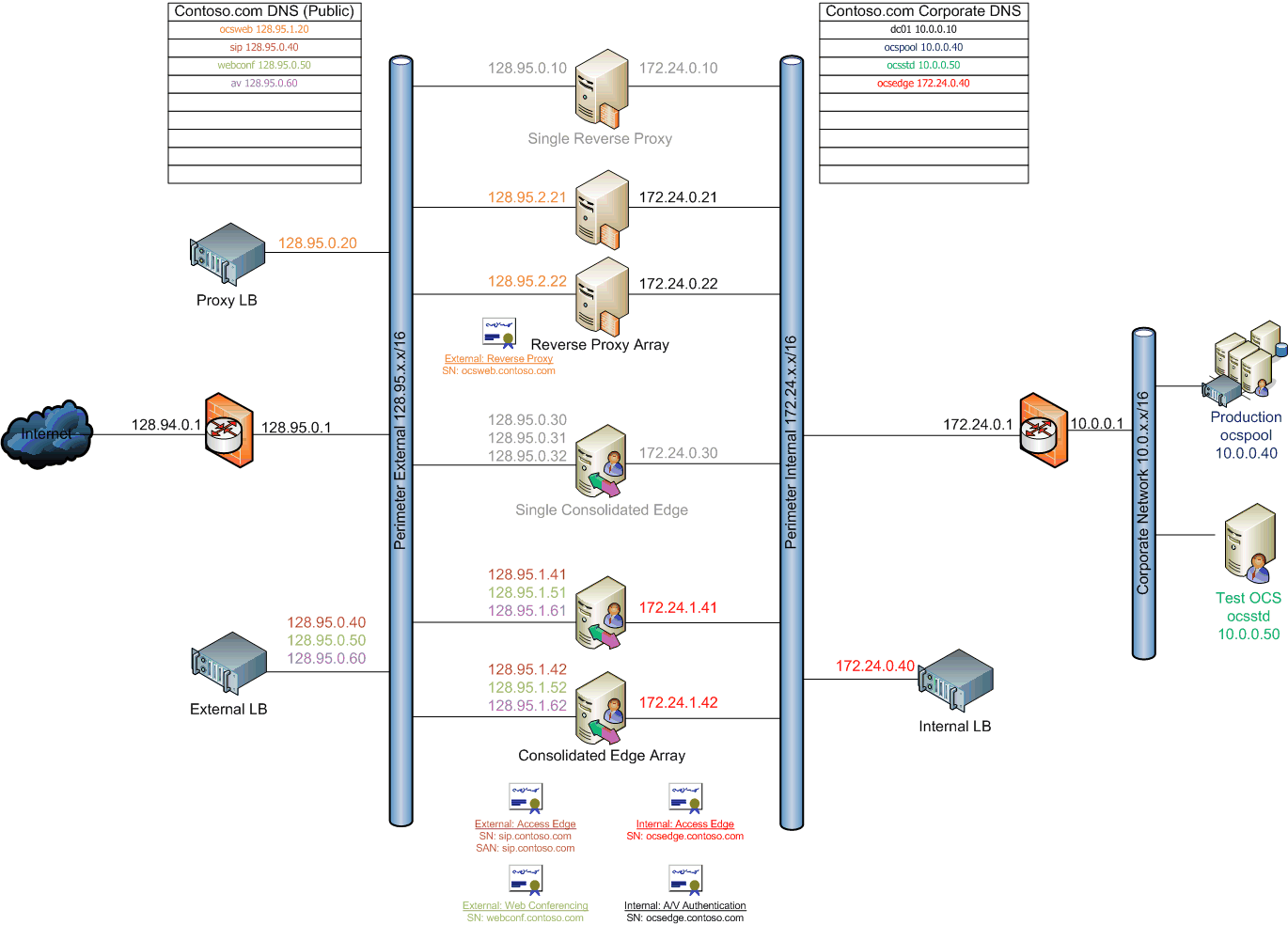This topic defines two sample topologies to illustrate specific steps that are involved in moving to a load balanced edge configuration. The following diagrams illustrate these topologies: Figure 1 illustrates a one-armed topology, and Figure 2 illustrates a two-armed topology. These are the only two topologies that are supported in Office Communications Server 2007 R2. Note that the IP addresses of the corresponding servers in both diagrams are the same. The key difference is the networking topology and routing. In particular, notice the difference in subnets between the two diagrams.


Your networking team may have an existing best practice for deploying load balanced services, which will probably have the biggest impact on which option you choose. If no precedent exists, following are factors to consider when you are deciding between a one-armed or two-armed topology:
-
One-armed topology.A one-armed topology is easier to deploy
from a networking perspective because the load balancers can reside
on the existing networks without requiring any additional changes
in routing. However, not all traffic goes through the load balancer
VIP, such as media between clients and the A/V Edge Server. If one
function of the load balancer is to be a firewall for the Edge
Servers, this topology will not be sufficient. One benefit of this
topology is that testing the Edge Server functionality independent
of the load balancer is easier because there is no dependency on
the routing functionality of the load balancer.
-
Two-armed topology.In a two-armed topology, the Edge Server
and reverse proxy server reside behind the load balancers on
private networks. The intent is to abstract these servers away from
the internal and external perimeter networks. This is possible with
the reverse proxies, since only HTTP traffic is being handled.
However, the Edge Servers cannot truly be hidden by the load
balancer VIPs alone because clients on the Internet and corporate
networks need to contact the A/V Edge Server directly to establish
media. In addition, the Access Edge Server and A/V Edge Server need
to be able to initiate connections out to the Internet for
federation. This means that the load balancers that are servicing
both the internal and external sides Edge Server interfaces must
actually route packets in both directions. It also means that the
internal private edge networks must use an IP address range that is
routable from within the corporation and the external private edge
network must use an IP address range that is publically routable
from the Internet. This topology enables the load balancer to be a
single point of entry for all packets to and from the Edge Servers,
so you can perform firewall functionality in the two-armed
topology. Remember that the networking load is considerably higher
in the two-armed topology because all traffic destined for the Edge
Servers goes through the load balancer.








 See Also
See Also